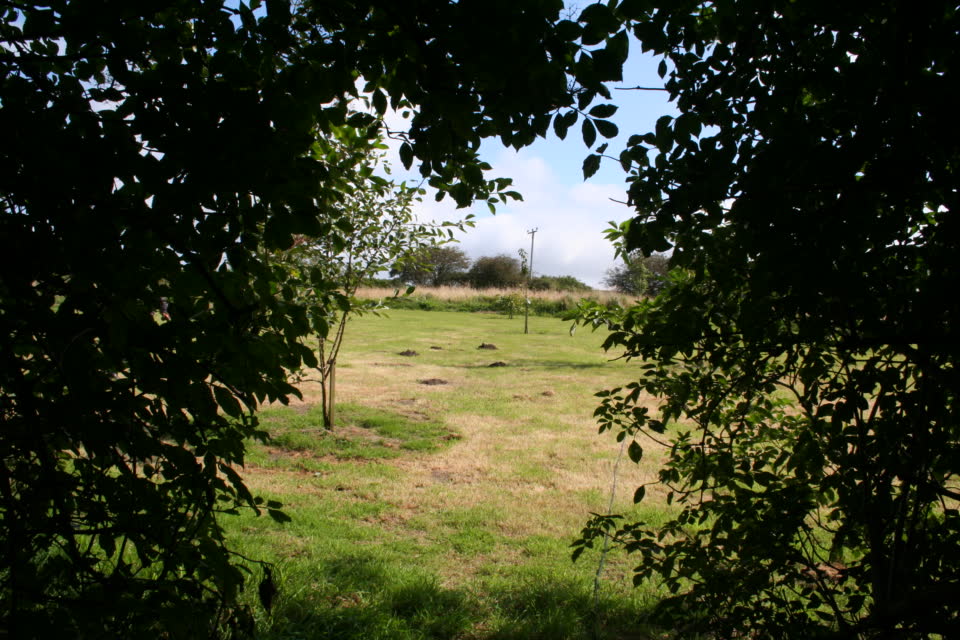
One of the best things about living in countryfied settings are the views you get each day.
Being close to nature is a great way to boost your feel-good factors and Paul has been working in the small wood next to the school at the bottom of the orchard area and doing a lot of tree maintenance. This has consisted of removing the ivy vines that have invaded the trees and climbing into the tree canopy and stealing their light by overshadowing the tree.
This has the result of killing the tree in the long term by depriving it of natural light. By cutting the vines at the base of the tree as it winds around the tree, and pulling off the vines right up into the canopy restores the light for the tree to flourish again.
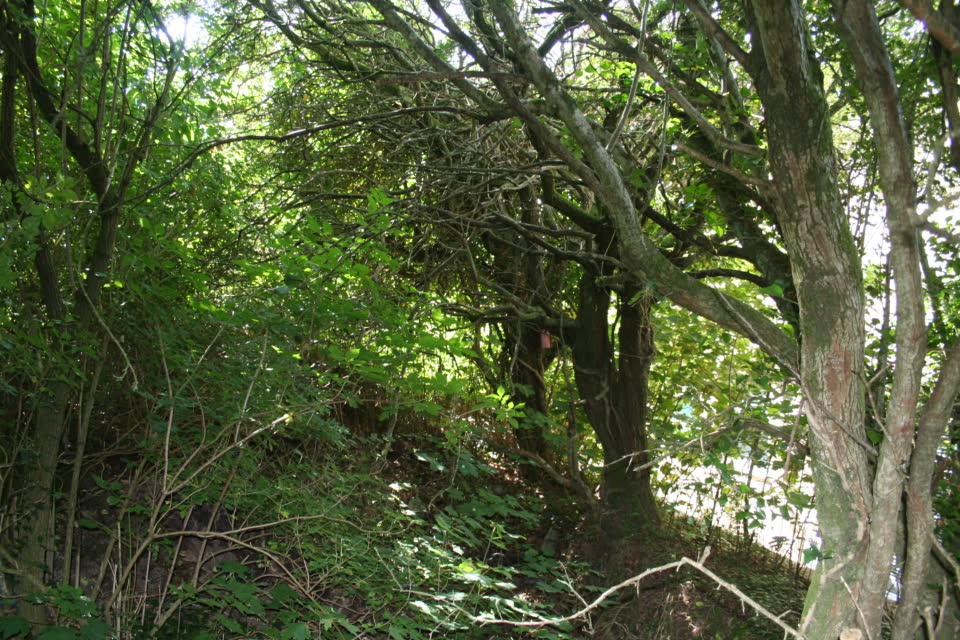
View to the back end of the small wood.
The above photo shows how the vines of the ivy get tangled into a big mess as seen on the middle tree at the back. The small red thing you can see is a bird box in case you are wondering. After cutting the vines off at base level, it is then a difficult job to work upwards on the trunk, cutting and removing the vines as we go. These trees here are all Hawthorn except for the one on the left which is an Elder tree.
There are quite a few self-seeded Elders here which paul hopes to remove this winter and plant up in the larger fields along with many other trees we have ready to go. Most of which are pretty small and will take many years to get to a decent size.
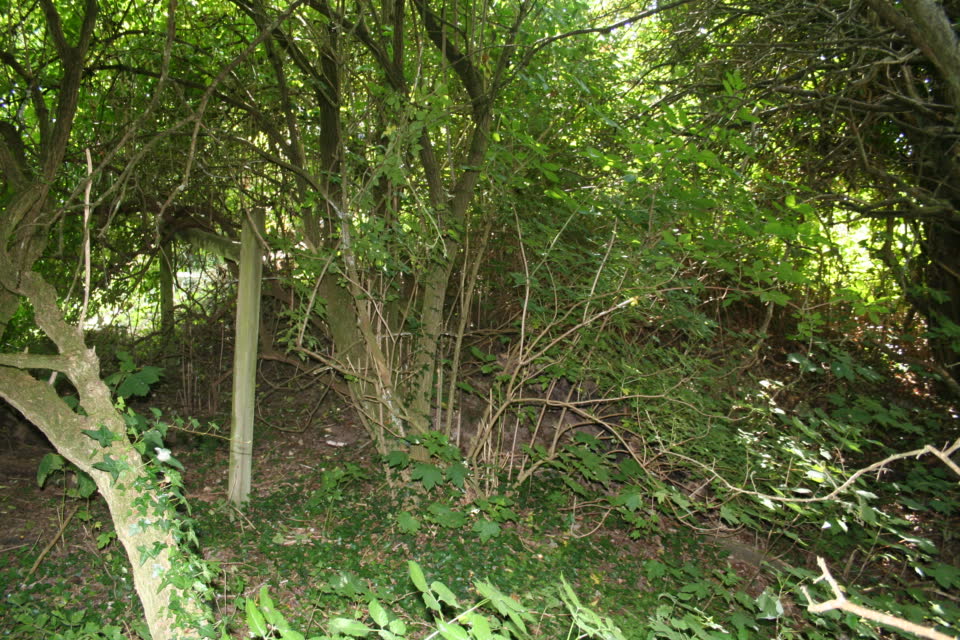
Another view of the small wood.
Looking at the photo above you can see on the left how the ivy starts to make its way up the tree trunks on its way to the canopy where it can then take over the area with the most sunlight. Once this area is cut back and the ground cleared, we can then plant it up with more British Bluebells to fill it out. There are a few Bluebells already growing here but the area needs to be managed to keep it clear. Other flowers to go in will be Polyanthus, Lilly-of-the-valley, Foam Flower, and Cyclamen.
We have been here at The Stables for just over two years now, and looking back we have done quite a bit of work to the place that is easy to forget about. So let’s go over a few things.
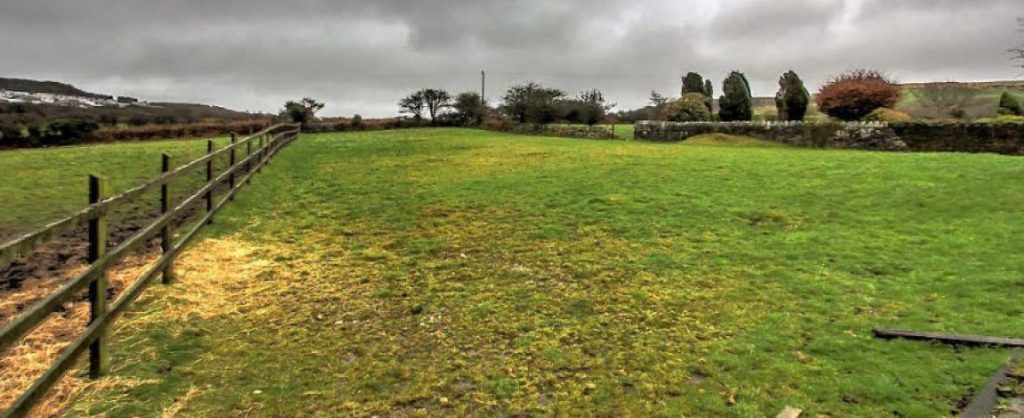
The middle field when we first arrived.
Horses are like mobile lawnmowers and will keep the grass and weeds down and this is why the above photo looks clean and tidy if a little bare. Once the horses left, nature once again moved in to reclaim the ground as she seemed fit, helped of course by those little birdies dropping seeds everywhere!

First to go in were a few beds. You need to plan in advance if you grow veg.
Getting the first No-Dig beds in was paramount as we needed to be prepared for the new growing season in the new year. With the No-Dig way, you do not have to dig out the weeds or grass, but cover them with a good layer of cardboard then pile on 4-6 inches of well-rotted manure or compost. The grass will die back and you can plant immediately should you wish to do so.

With a large section of the wall already built, the growing area is starting to take shape.
The central bed seen here is one of the first beds to be laid down as No-Dig and is producing much in the way of vegetables. As we add more composts each year, the ground will soften up even further making extraction of the veg will be much easier. The wall here runs along the West side of the garden and the next part to build will be the Northside down to the Composting area.
When we moved in Paul had to renew part of the Stable block roof as there were too many leaks to be able to fit the new growing room and workshops. Building those rooms in the block also took many weeks and used a lot of the timber we took down from the fencing around the sand-ring.
After that, came the chore of getting our first shed in. This was sited on the sand ring and measured 8feet x 12 feet, built from reclaimed timber.
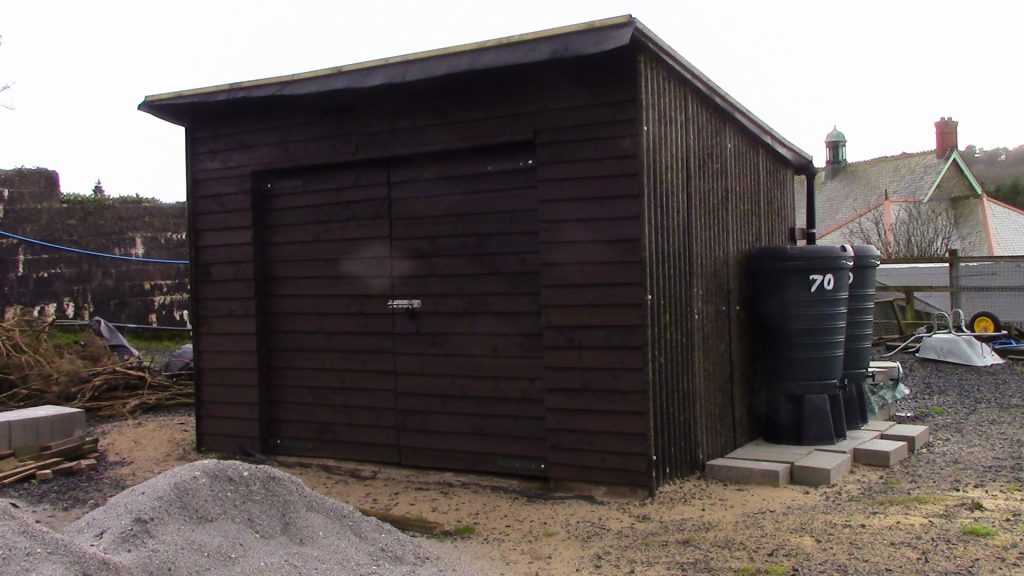
Sand ring shed finished and very useful for tool storage.
The next job was the polytunnel which is 40 feet long by 20 feet wide and this took a fair while to build from a kit we bought. That is now producing many of our vegetables. Since then we now have a purpose-built composting area which Loraine uses to great effect producing tons of compost each year.
In between the building works we put in our Fruit field, an orchard, asparagus beds, and many other trees. Paul has also cleared what we call the North-West passage which runs from the back of the sand ring over the tree line into the orchard that lies beyond.
The final build to date is the large Hut built on the North-west corner of the garden wall measuring 22 feet by 18 feet complete with all mod-cons such as internet service, telephone and electricity, water and seating area along with a veranda at front and side. Next, on to the building of the North wall.
That's all for now folks.....